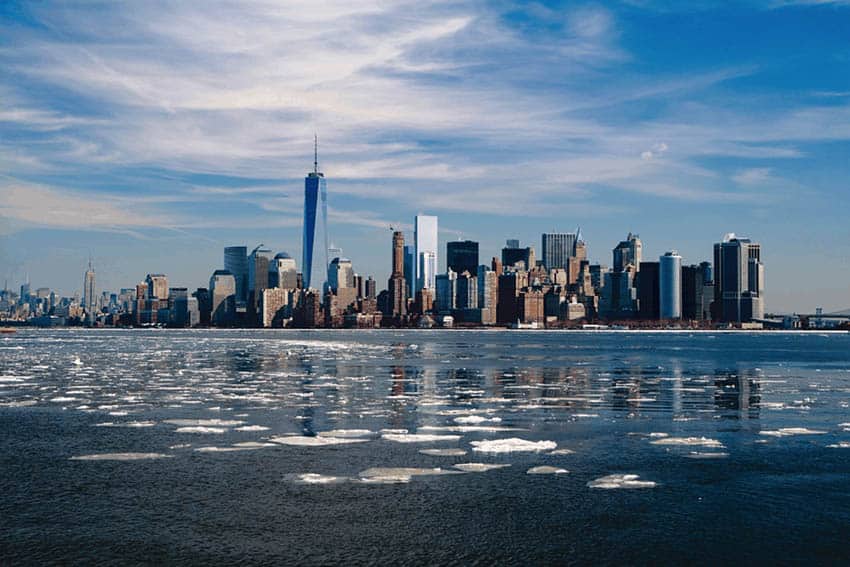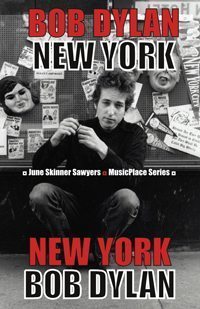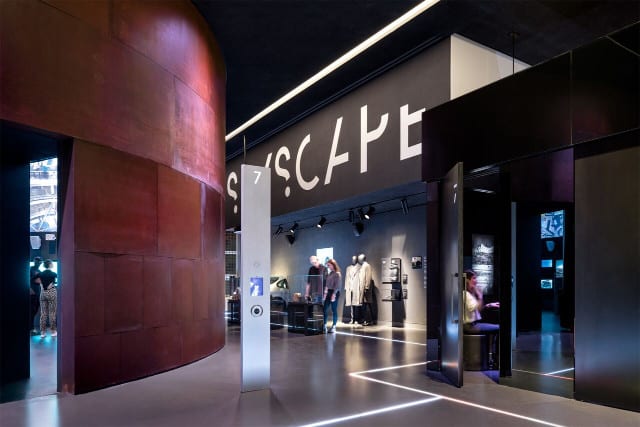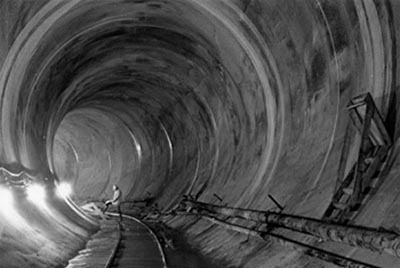
Bob Dylan in New York: The Sites and Landmarks of Bob Dylan’s Life in the City
By Rachel Siden

The new book Bob Dylan: New York is part of the MusicPlace series by Roaring Forties Press. This series is dedicated to exploring the close relationships between music artists and the cities in which they lived in order to provide a new perspective on popular music.
The author of this book in the series, June Skinner Sawyers, has researched and written on many topics related to music.
Her works include Celtic Music; Tougher Than the Rest, 100 Best Bruce Springsteen Songs, Read the Beatles, and has even taught a class entitled “The Country I Come From Is Called the Midwest: Bob Dylan and the American Song Tradition.”
Sawyers’ knowledge of Dylan creates a vivid account of his life in Bob Dylan: New York. Sawyers takes the reader on a journey through Bob Dylan’s life in New York City beginning with his arrival in Greenwich Village and ending with his return visits to New York throughout the 2000s.
While her book describes the history of how Bob Dylan’s career grew in New York– the city where Robert Zimmerman was “reborn as Bob Dylan,” her book is by no means merely history.
The reader is taken on a journey through New York city with Sawyers as their tour guide: while reading about major moments in Bob Dylan’s life, she points out the city locations in which these events transpired.
Sawyers’ book features over fifty sites where Bob Dylan “lived, worked, and played.” Her listed locations include sites such as the Cafe Wha?, the place where Bob Dylan first played the day he arrived in New York, 161 W. Fourth St.,
Dylan’s first apartment in New York, and even the Supreme Court building where Bob Dylan officially changed his name.
The guidebook-like feel of Bob Dylan: New York is made complete by the maps of Manhattan and Greenwich Village that are included inside. Every location discussed in her book is carefully plotted and labeled with the full address. Using only her book, a self-guided tour of Bob Dylan’s New York is made easy.
Travel Itinerary: Some Notable Sites From Bob Dylan’s Early Years in New York
As described by Sawyers, Bob Dylan has always had an extremely close relationship with New York City. Not only was the name ‘Bob Dylan’ born in New York, but Dylan lived in New York, worked in New York, and became famous from his years playing in New York. As Bob Dylan himself said, “I would not be doing what I’m doing today if I hadn’t come to New York… I was made to keep going on by New York.”

One region in particular that had a significant amount of influence on Bob Dylan’s career was Greenwich Village. It was where Dylan played most of his early shows, and where he lived for the majority of his life.
In Sawyers’ book, many of the locations and landmarks associated with Bob Dylan are located in Greenwich Village, so in this itinerary of some notable Dylan-related sights, Greenwich Village is where this journey begins.
Stop 1: MacDougal Street
MacDougal Street is located in Greenwich Village and was a place that Bob Dylan visited often. On the street are cafes that Bob Dylan frequented, cafes that Bob Dylan performed in, and even one of his houses at 94 MacDougal St.
Cafe Wha?
115 MacDougal St.
New York, NY
This stop is first on the itinerary because for Bob Dylan, this cafe was also his first stop. According to Sawyers, “When Dylan first arrived in New York, he took the subway to Greenwich Village and went straight to the Cafe Wha?.”
In Dylan’s time, the Cafe Wha? was a popular folk club in Greenwich Village that housed various music acts as well as comedians such as Joan Rivers and Woody Allen. Dylan played at the Cafe Wha? on his very first day in New York City, and it was here that he was offered a chance to play harmonica with singer Fred Neil during Neil’s sets (which is the “harmonica job” Bob Dylan refers to in his song “Talkin’ New York”).
Today, the Cafe Wha? is still in operation and continues to host musical acts on different nights of the week. While the cafe may not host the same folk music that it did in Bob Dylan’s time, the New York Times states that the cafe’s musical acts still makes it “a stop you have to make whether you are living or just visiting New York City.”

Caffe Reggio
119 Macdougal St.
New York, NY
Visitors can also visit another venue of Dylan’s on Macdougal street. The Caffe Reggio was another cafe that Dylan played at and still stands today. But while the Cafe Wha? still houses musical acts, the Cafe Reggio is no longer a folk music venue. However, instead of music, visitors can enjoy the cafe’s “Original Cappuccino” (the first cappuccino introduced to America).
Panchito’s (Fat Black Pussycat)
105 MacDougal St.
New York, NY
105 MacDougal St. was the location of another cafe known as the Fat Black Pussycat. It was one of the many cafes that Bob Dylan visited when he lived in Greenwich, and is also the location where he wrote his song “Blowin’ in the Wind”– one of Dylan’s most famous. Today, the cafe is a Mexican restaurant called Panchito’s, but the faded black cat sign from the cafe is still visible on the brick wall above.
Greenwich Artists Mural
125 MacDougal St.
New York, NY
While New York has no official monuments dedicated to Bob Dylan, there is one sight in Greenwich Village that stands as a testament to his significance in New York. Located just across the street from the Caffe Reggio is a mural that stands next to a music club called the Groove. According to Sawyers, “The mural celebrates the many musicians associated with the Village, including Dylan.”
The mural is painted in bright, fluorescent colors and features artists such as The Beatles, Jimi Hendrix, Jim Morrison, and Joan Baez. At the top of the mural can be seen the words: “Keep the spirit of the sixties alive.”
Stop 2: Jones Street
Beyond 6th Avenue lies Jones Street. As a Bob Dylan landmark, Jones street is more significant than simply being a street that Dylan has walked. It is included in the itinerary because this street is featured in the album artwork for the record “The Freewheelin’ Bob Dylan.”
The cover features a picture of Bob Dylan walking down Jones Street with Suze Rotolo (his girlfriend at the time). Any cars parked on Jones Street today will likely look different from those on the album cover, but the street is the very same.

Bob Dylan’s Apartment
161 W. Fourth Street.
New York, NY
On the block at the end of Jones Street lies the first apartment that Bob Dylan had in New York City. It was a small apartment with a bedroom that Dylan said was “much more like a large closet.” He moved in with Rotolo in December of 1961 shortly after he recorded his debut album. Today, the apartment is still standing, but it is attached to an adult shop.
Stop 3: Carnegie Hall
881 Seventh Avenue
New York, NY
Carnegie Hall is a landmark in itself as a world-famous venue that has housed many famous artists and musicians over the years. As for Bob Dylan, Carnegie Hall was a significant place in his own life as it was the location for several performances in his own career.
On Saturday, November 4, 1961, Bob Dylan played his first professional concert at Carnegie Chapter Hall. The two-hundred-seat venue he played in is now a rehearsal hall called Kaplan Space but is still located in the same building as Carnegie Hall.
The show that Dylan played that November night was not much of a success, as only fifty-three people attended, but according to Sawyers, “it provided Dylan with some exposure north of Fourteenth St.” It was a show that would bring him one step closer to growing in fame.
Throughout Dylan’s career, he would return several times to play at Carnegie Hall– and the shows would prove far more successful in his return trips.
His first successful Carnegie Hall performance, which was also his first time playing in the actual Carnegie Hall, occurred on September 22, 1962. He played “A Hard Rain’s A-Gonna Fall” for the very first time in public, and though it was the one song he was able to play in the ten minute slot he was given, Sawyers states that “the crowd roared in approval”– portending the future success Dylan would enjoy on his return visits to the famous music hall.

Even More Stops!
This itinerary only covers a small fraction of the fifty-plus locations listed in Sawyers’ book. There are other residences of Bob Dylan’s that can be seen (such as the famous Hotel Chelsea), other venues that Dylan played at, and many places Bob Dylan visited ranging from cafes to newspaper kiosks.
For the more passionate Bob Dylan fans or pop culture enthusiasts who would want to see more, Bob Dylan: New York has everything you could need to plan your own trip to New York City. Check it out!
Rachel Siden is a former editorial assistant for GoNomad.com. She is a graduate of UMass Amherst with a B.A. in Philosophy and in Religious Studies, and is a freelance travel writer from central Massachusetts.
Bob Dylan New York…buy this book on Amazon
- New York State’s Catskill Mountains - August 27, 2013
- Roads to Berlin by Cees Nooteboom - August 7, 2013
- A Hidden Paradise in Ecuador’s Coast - July 31, 2013





